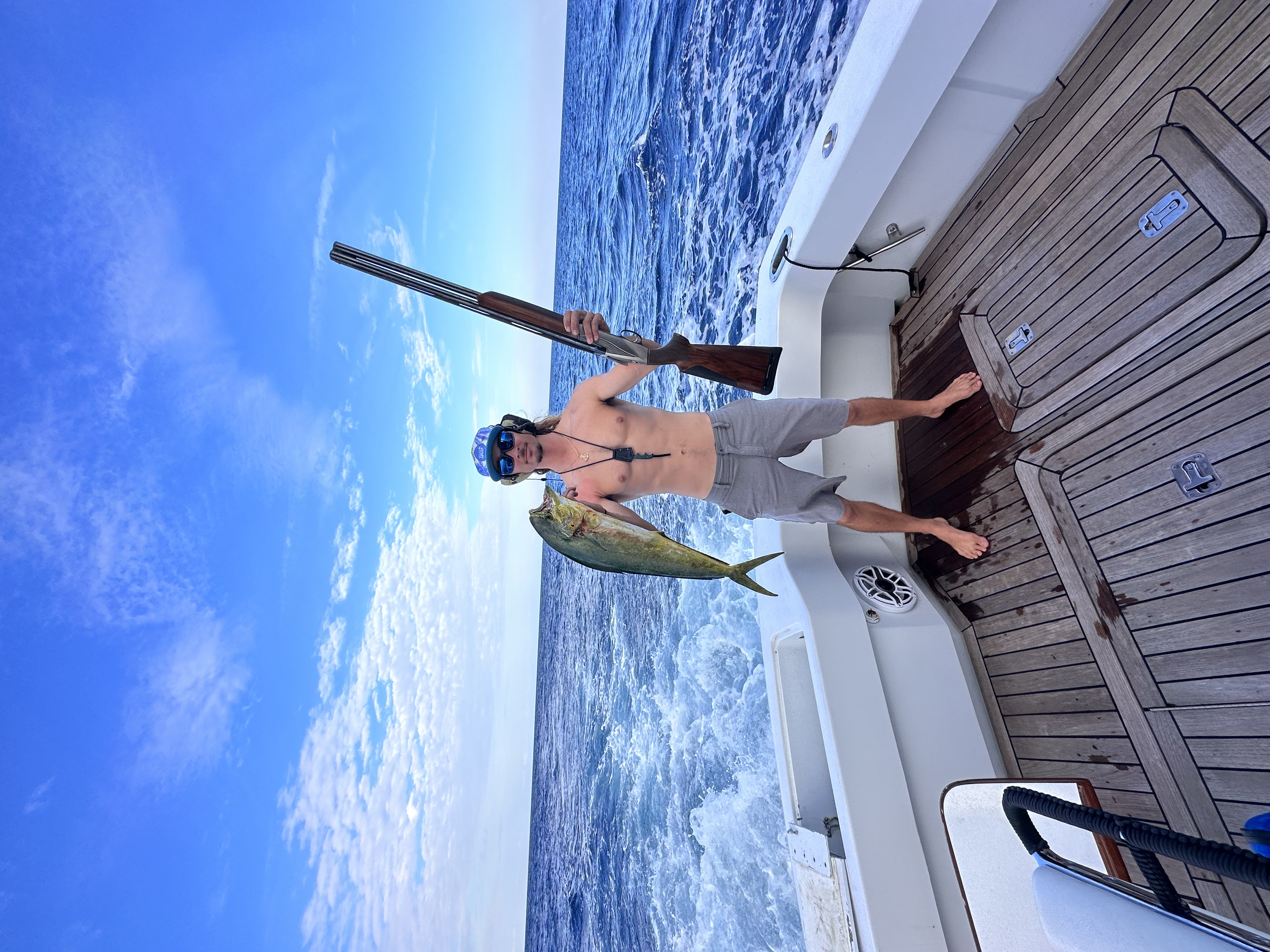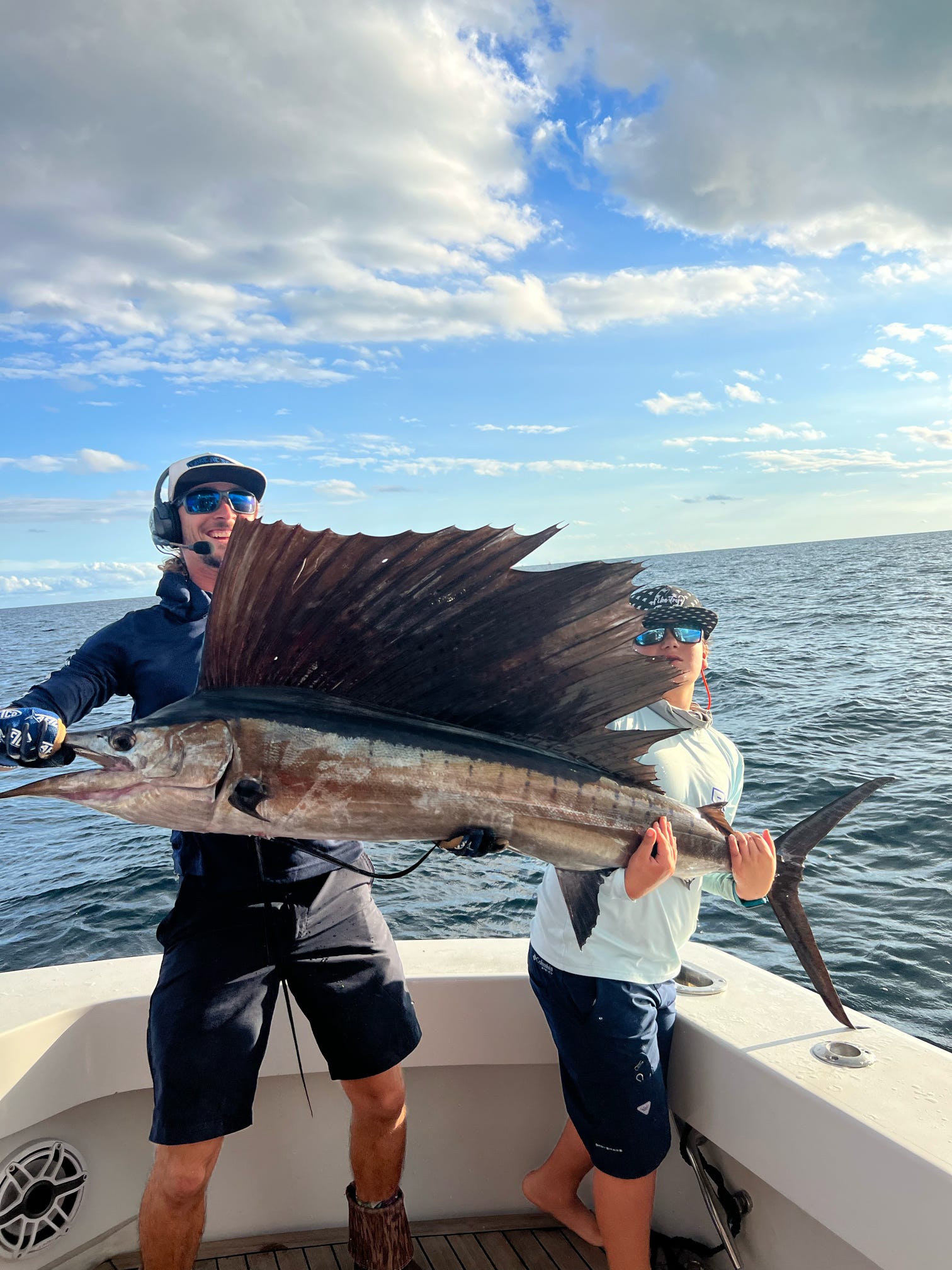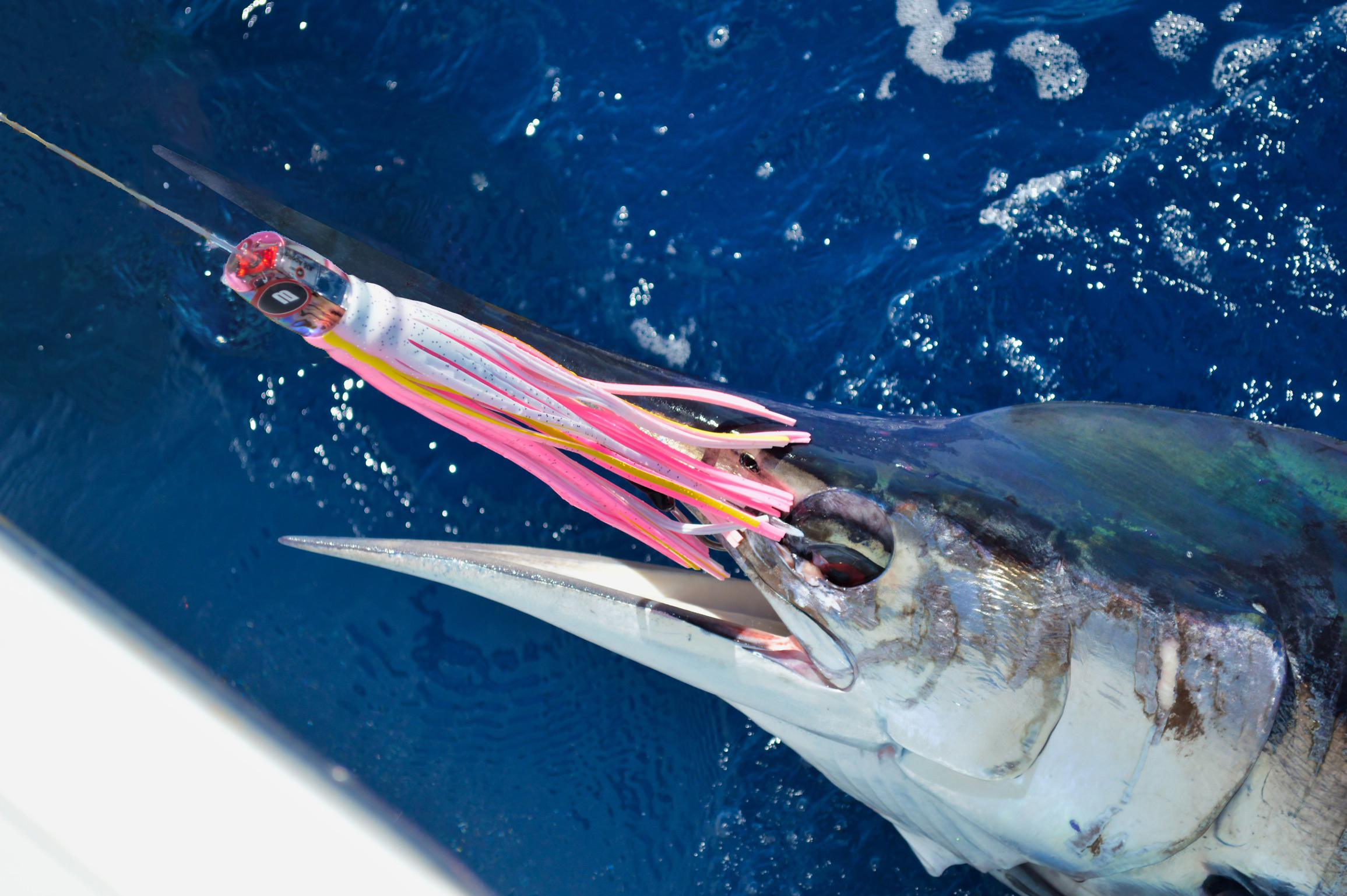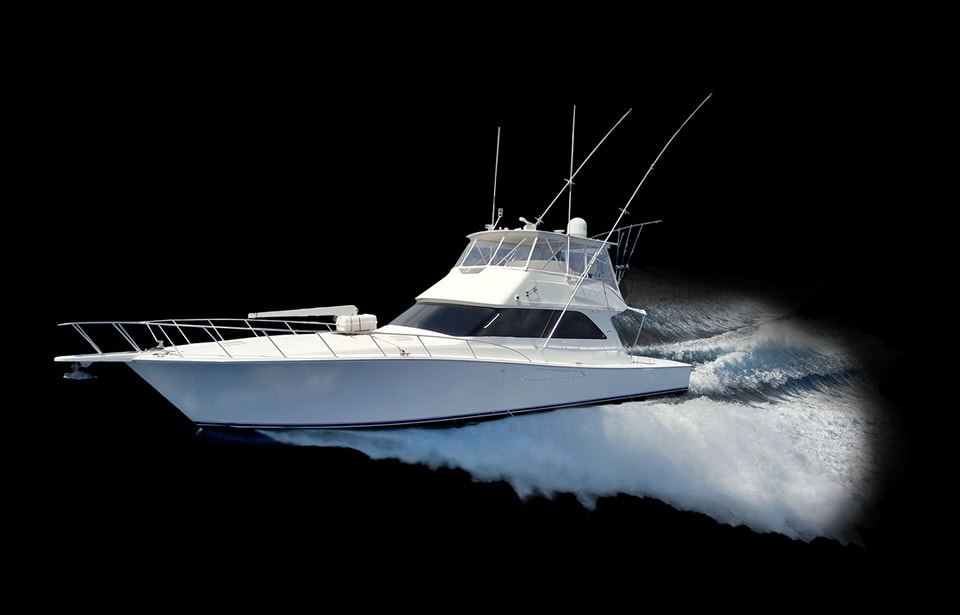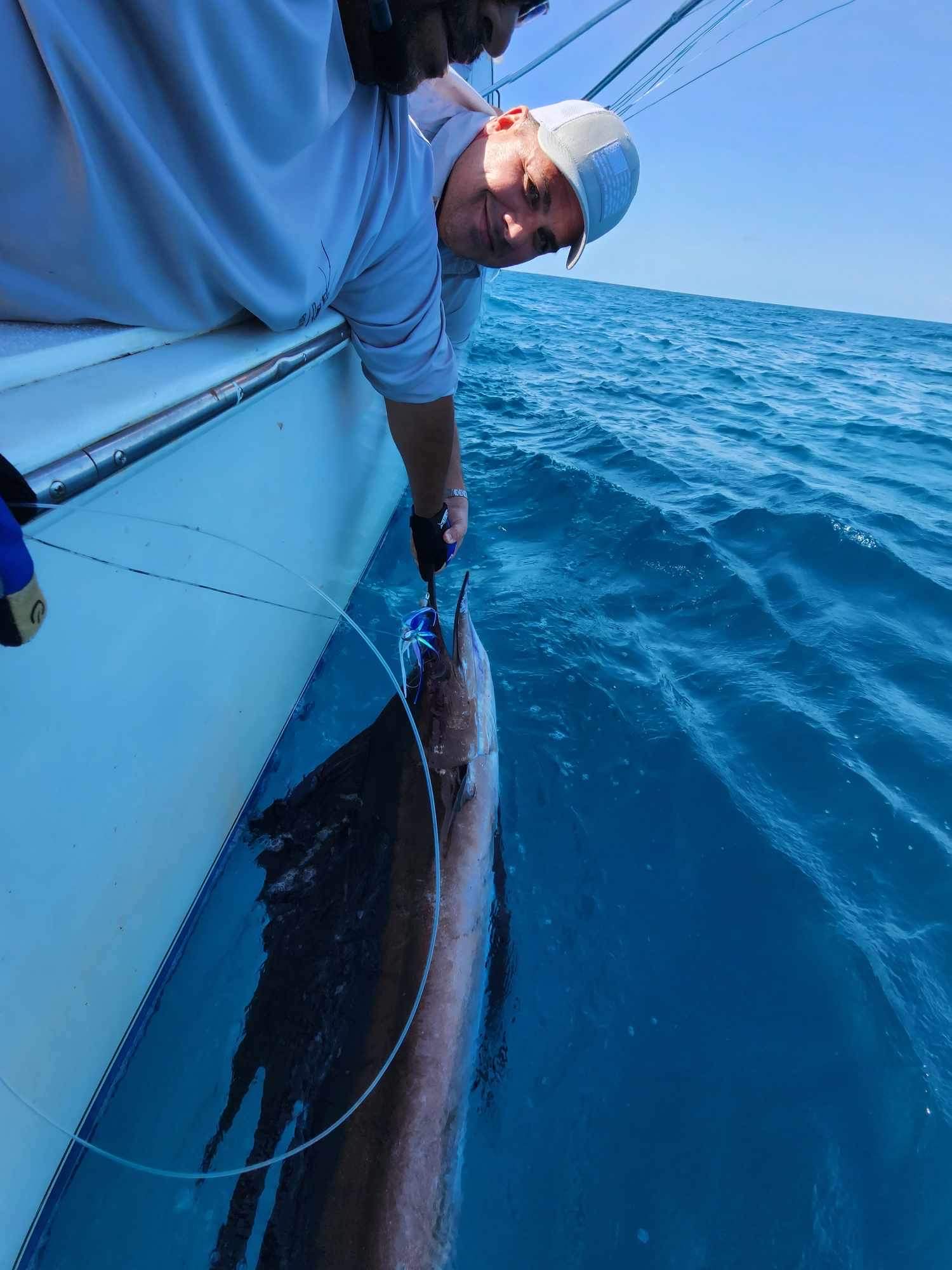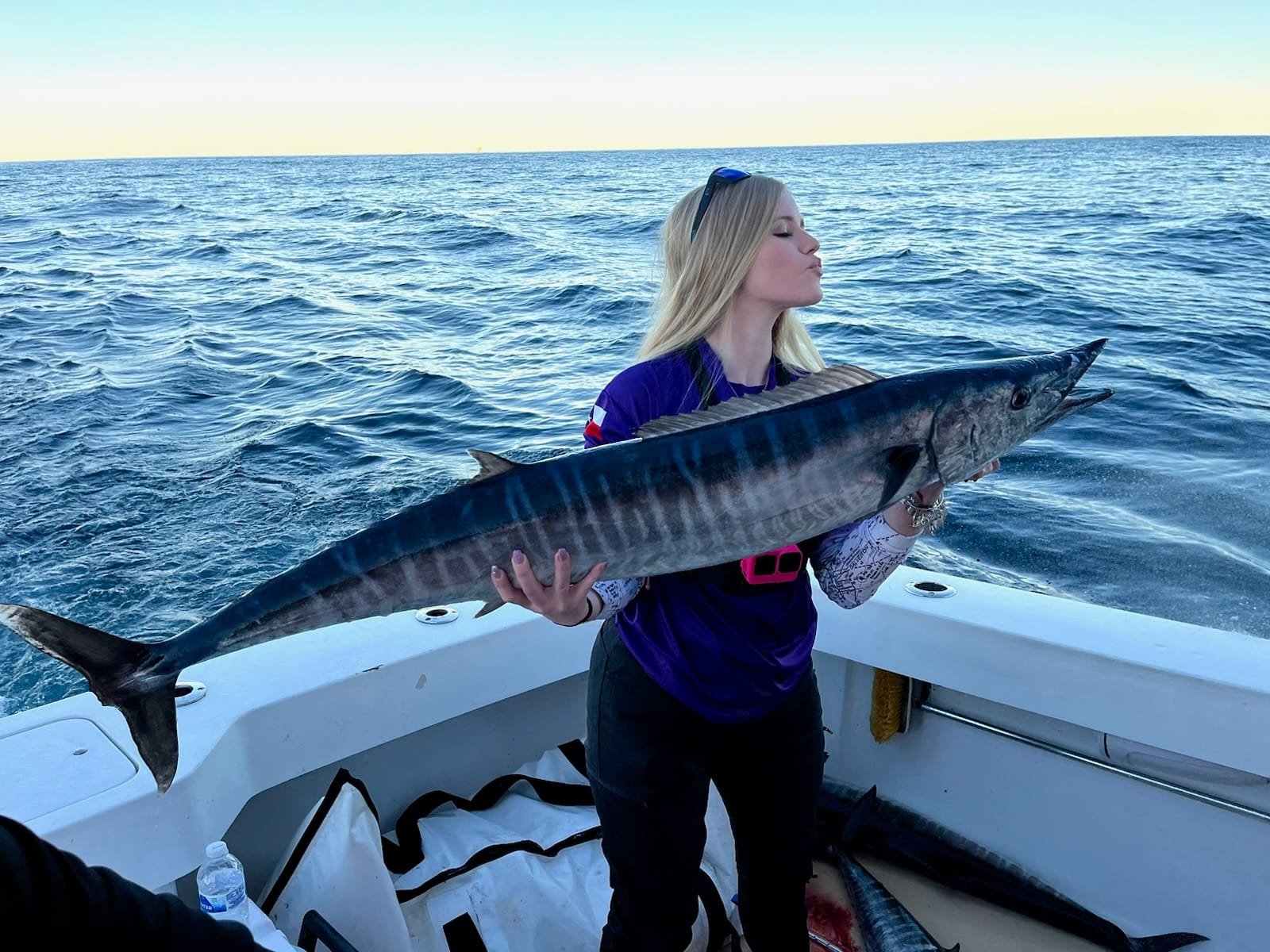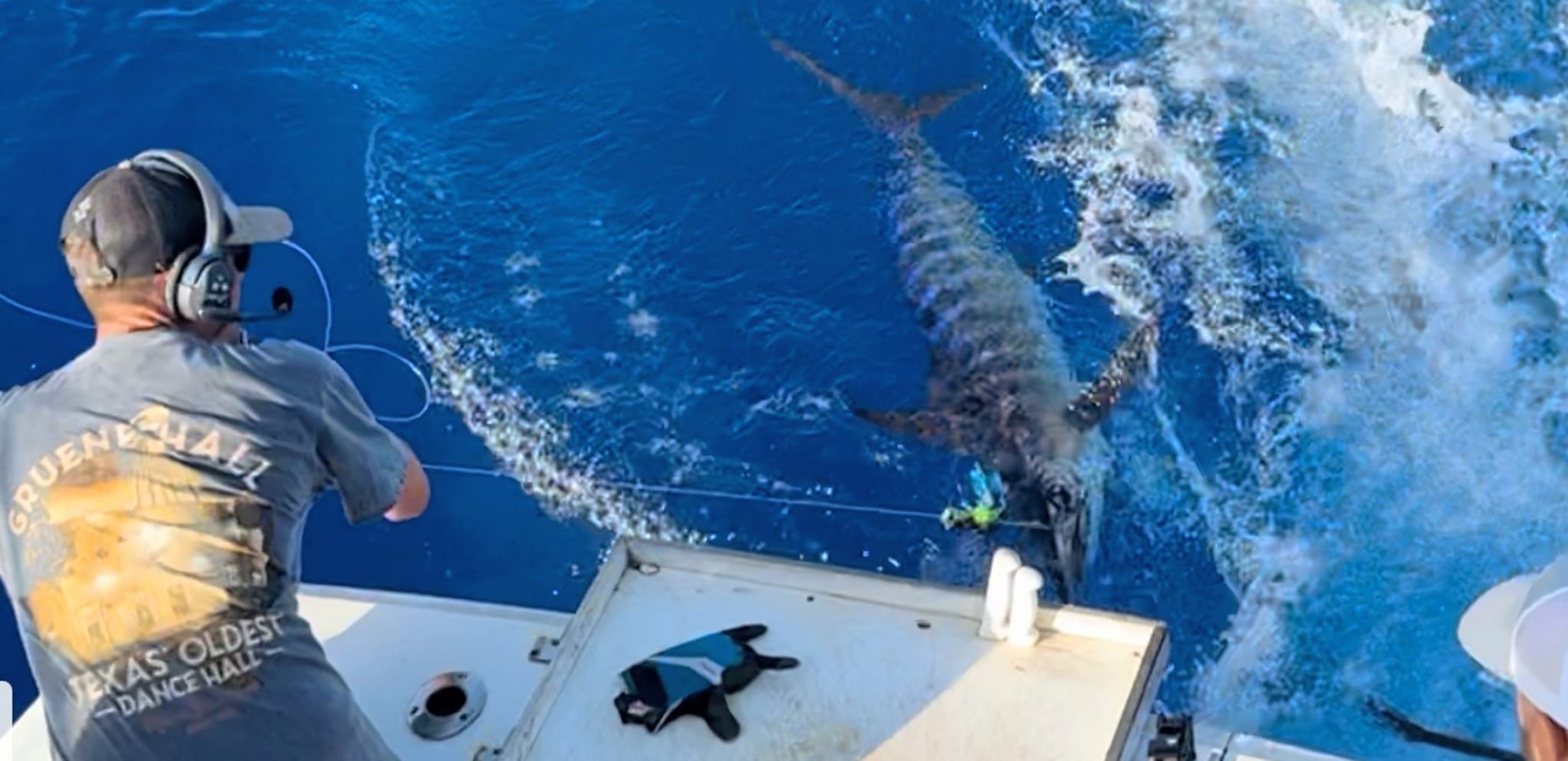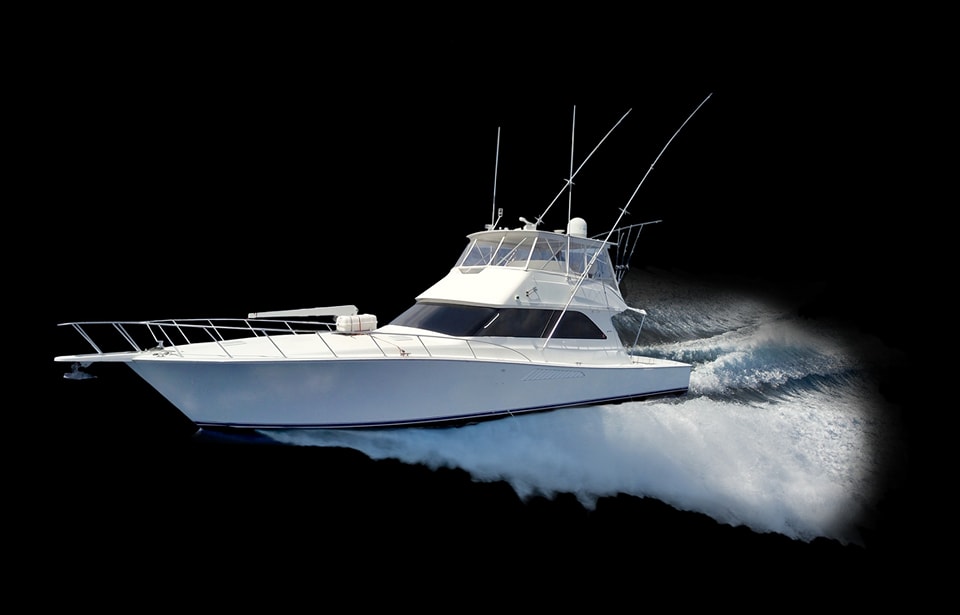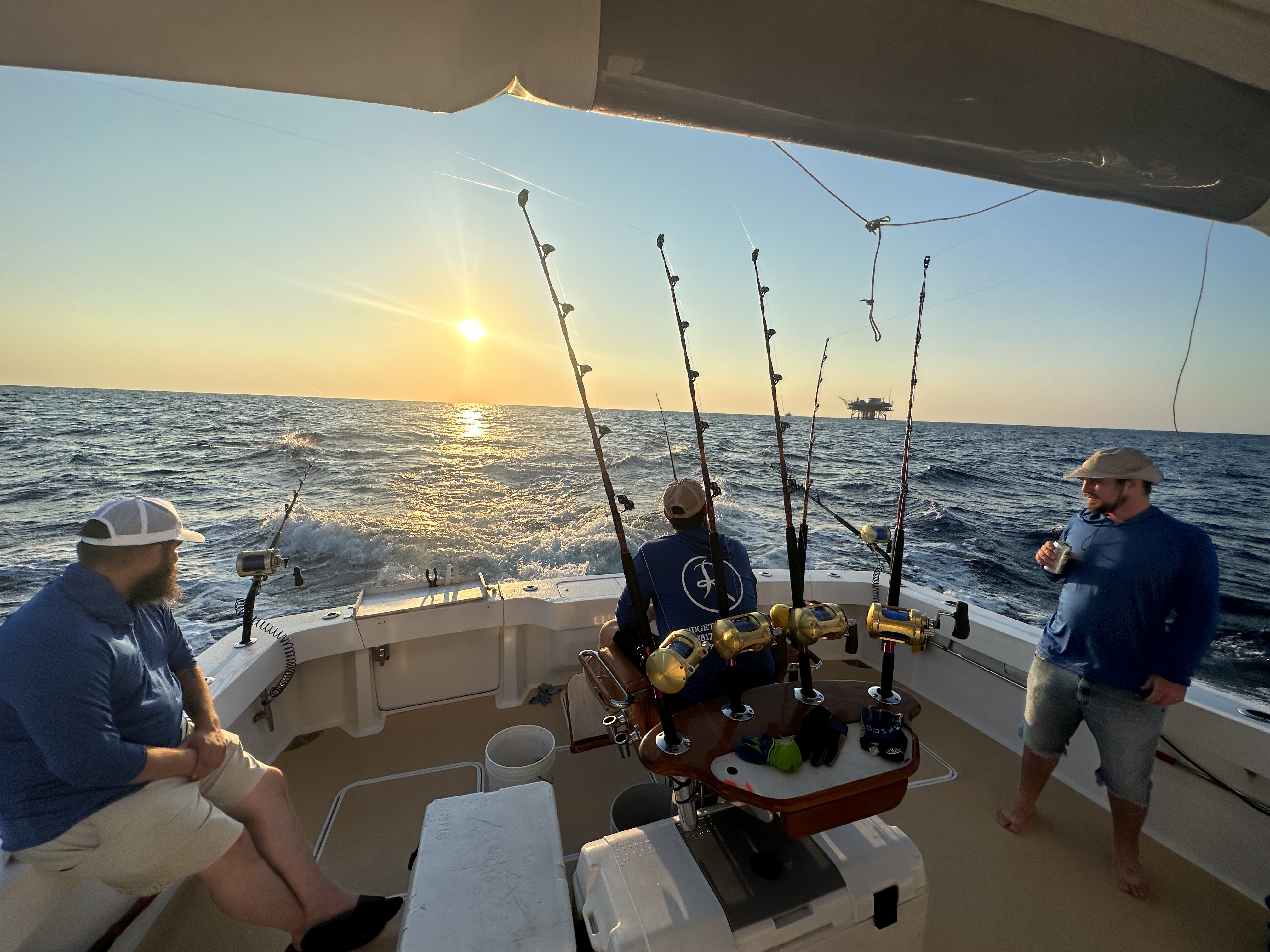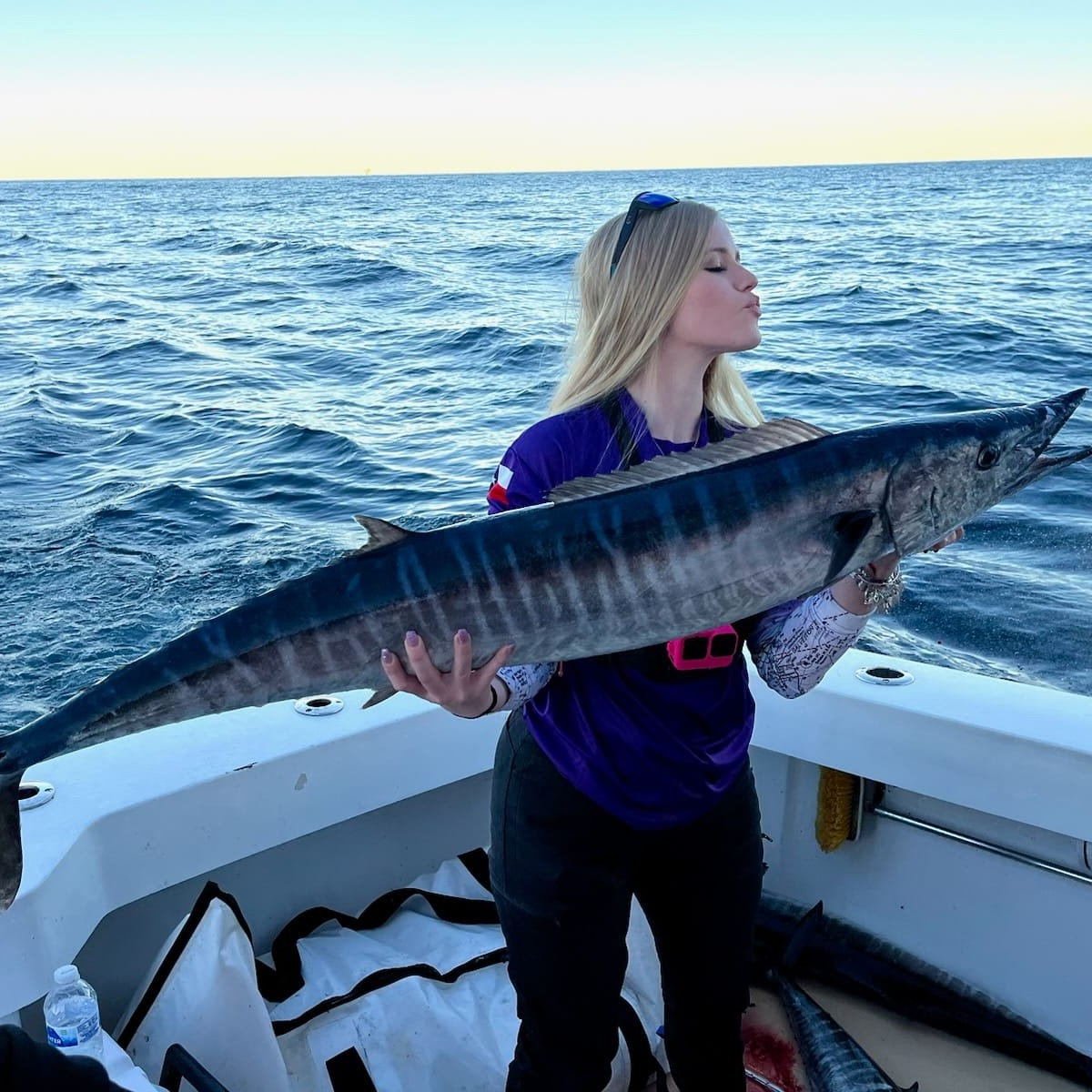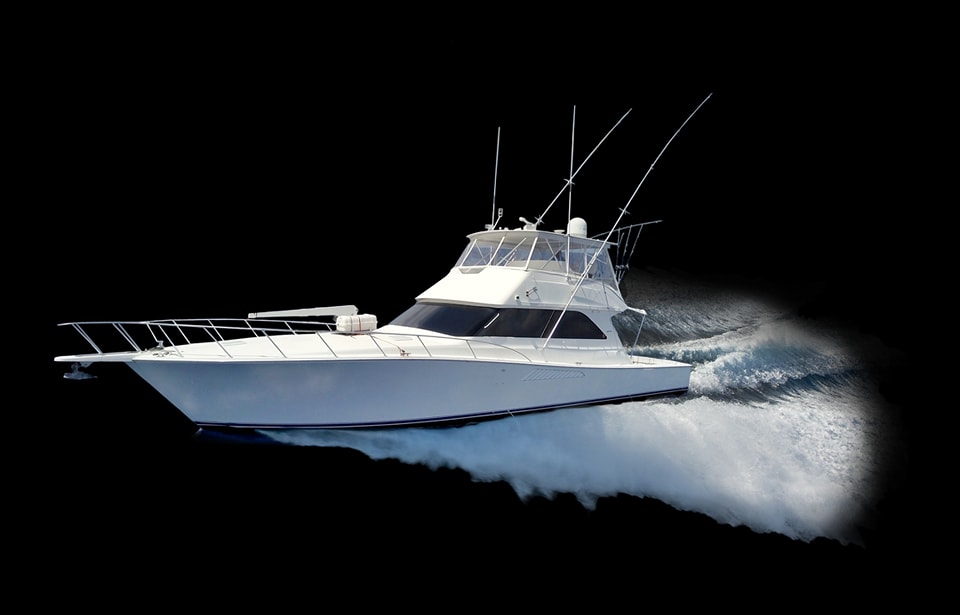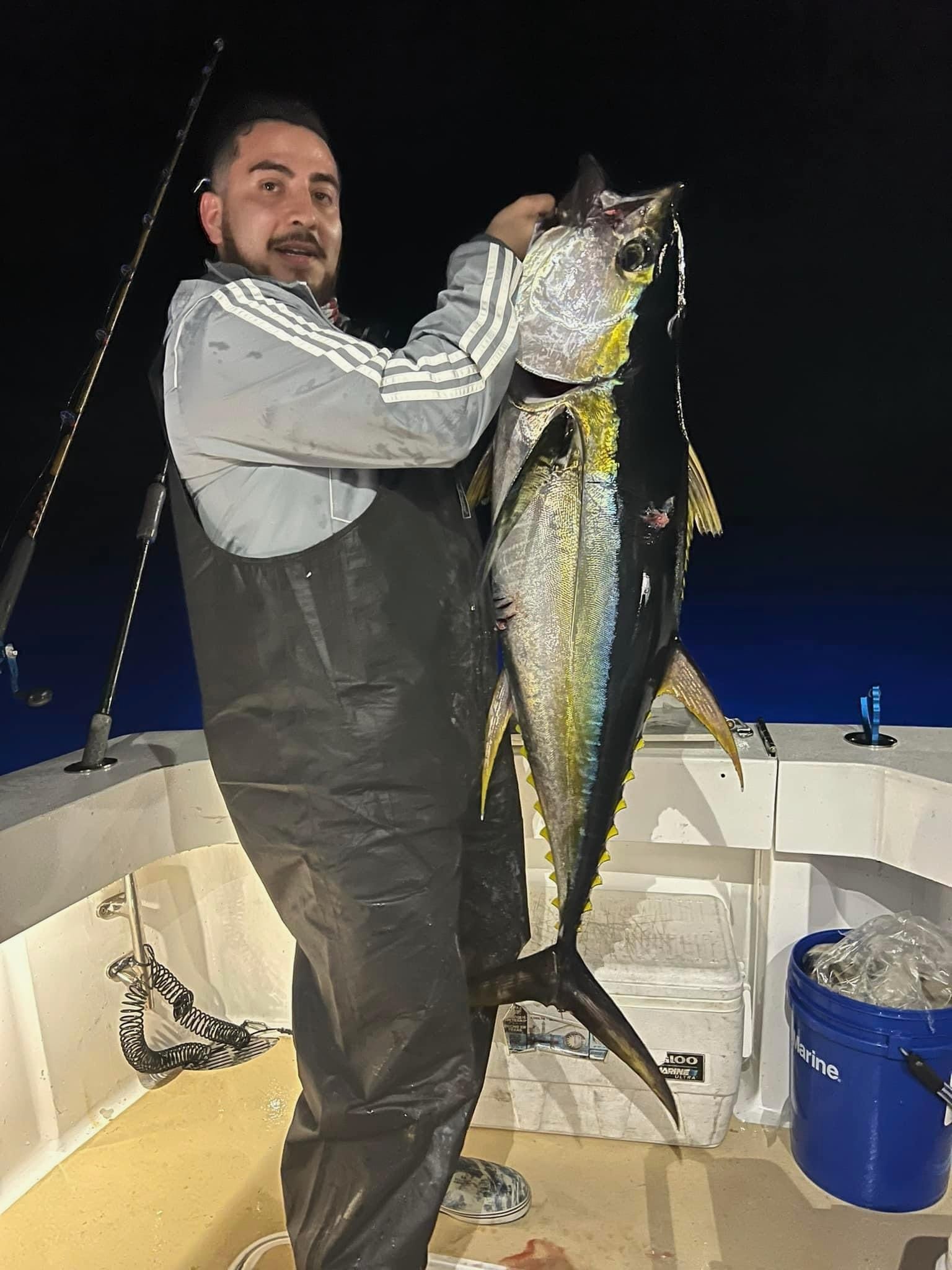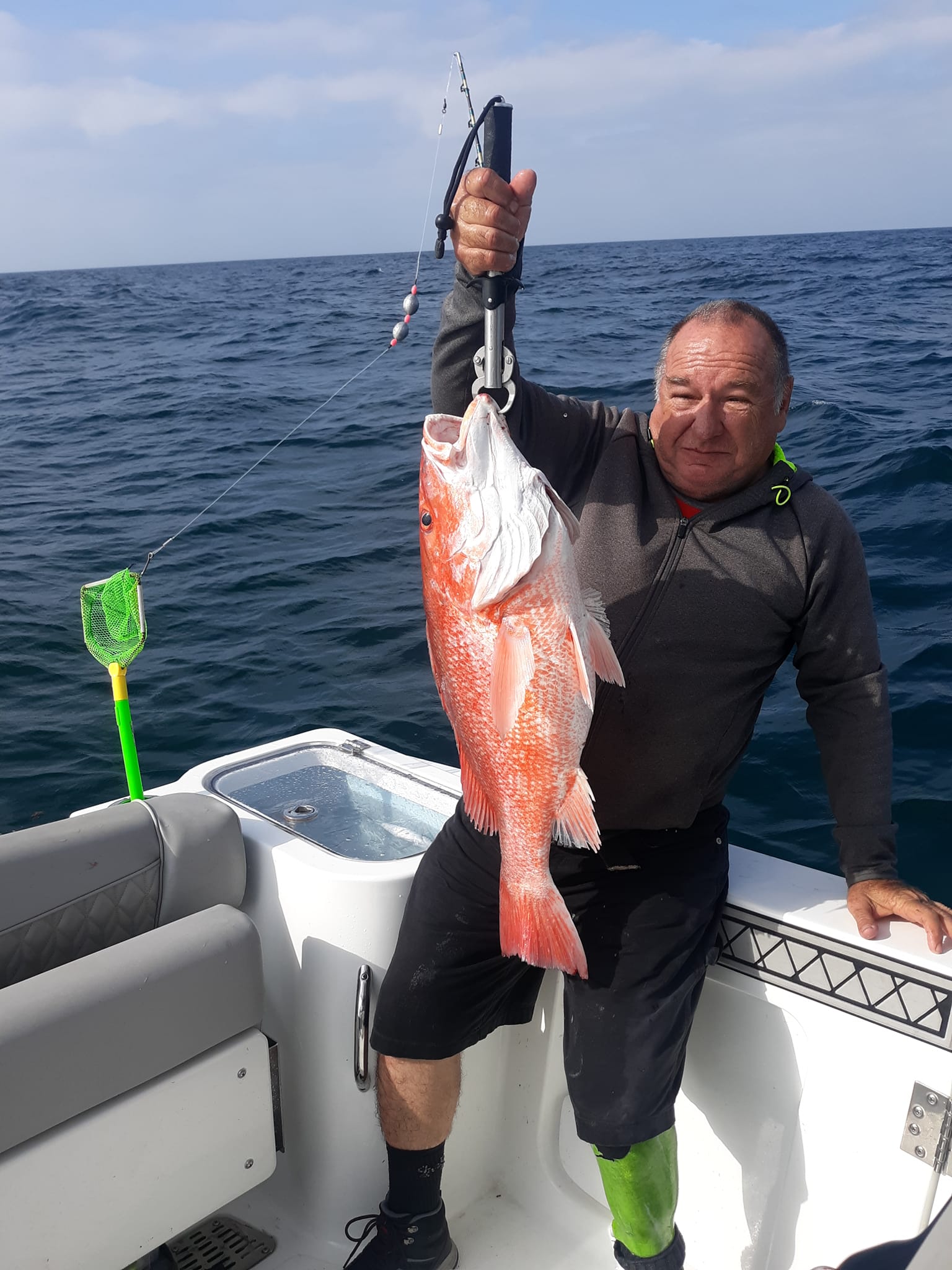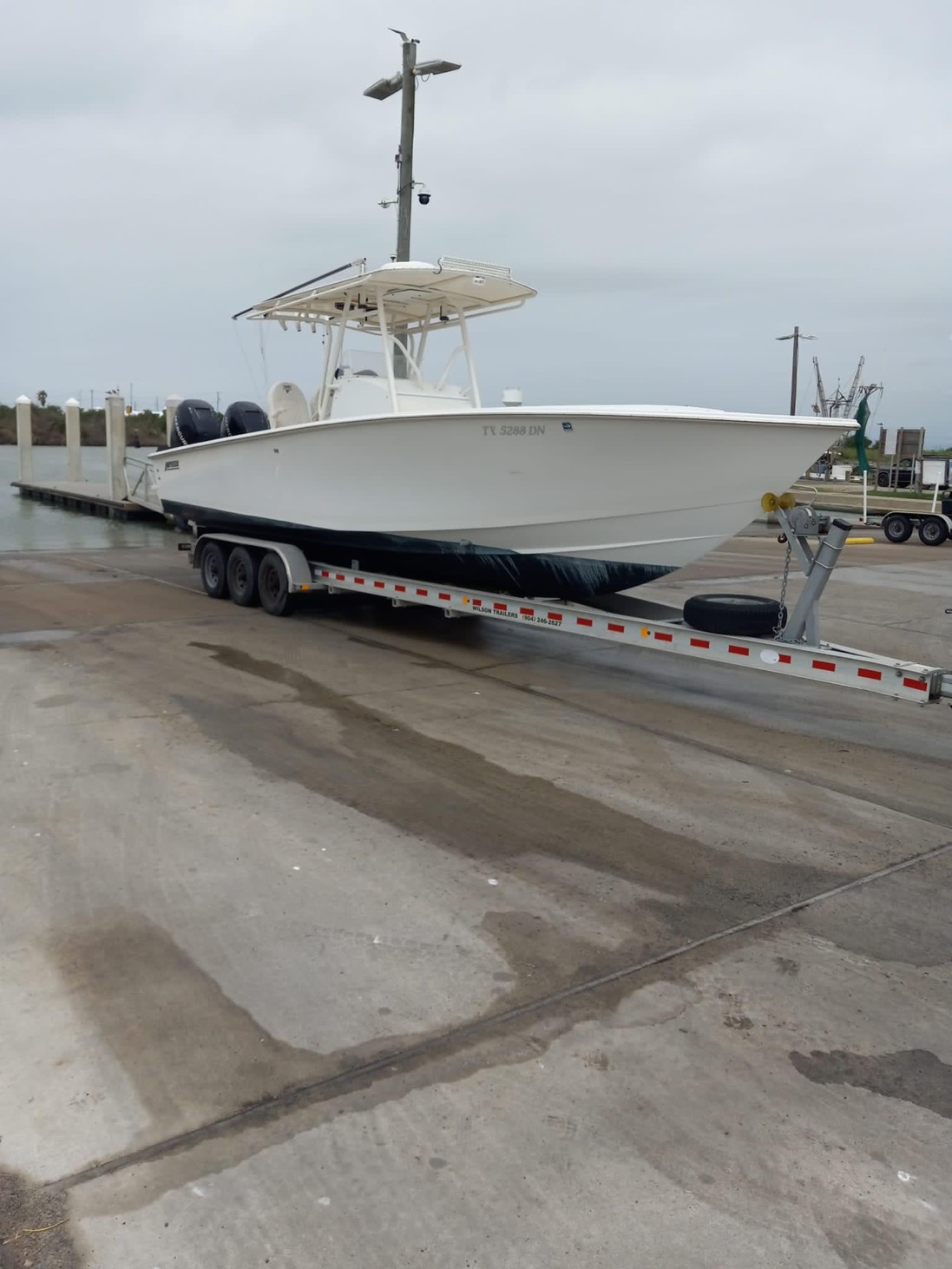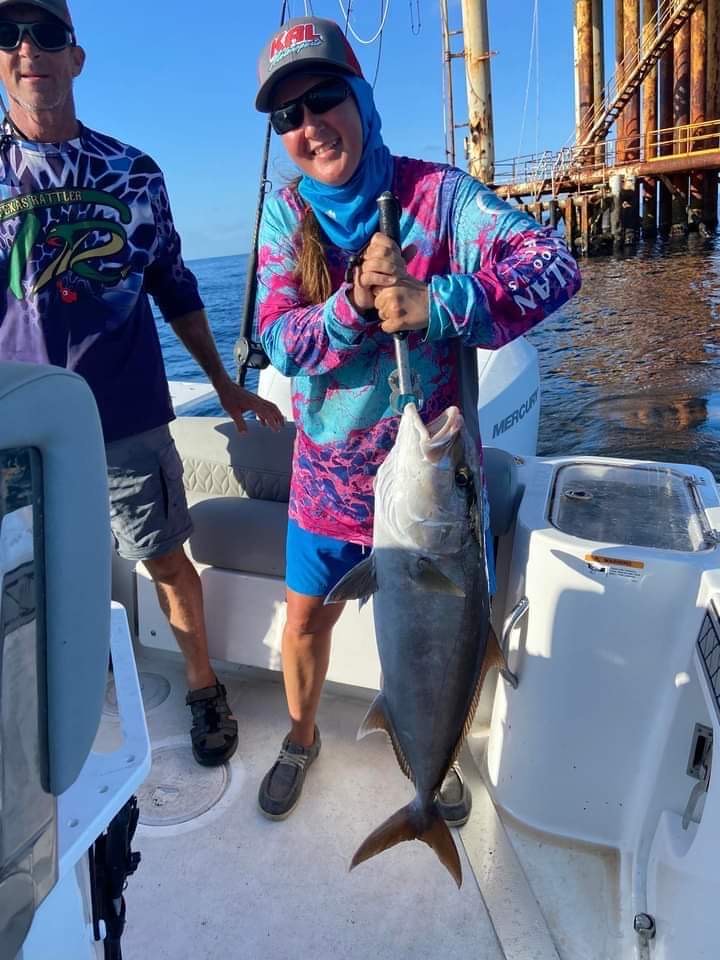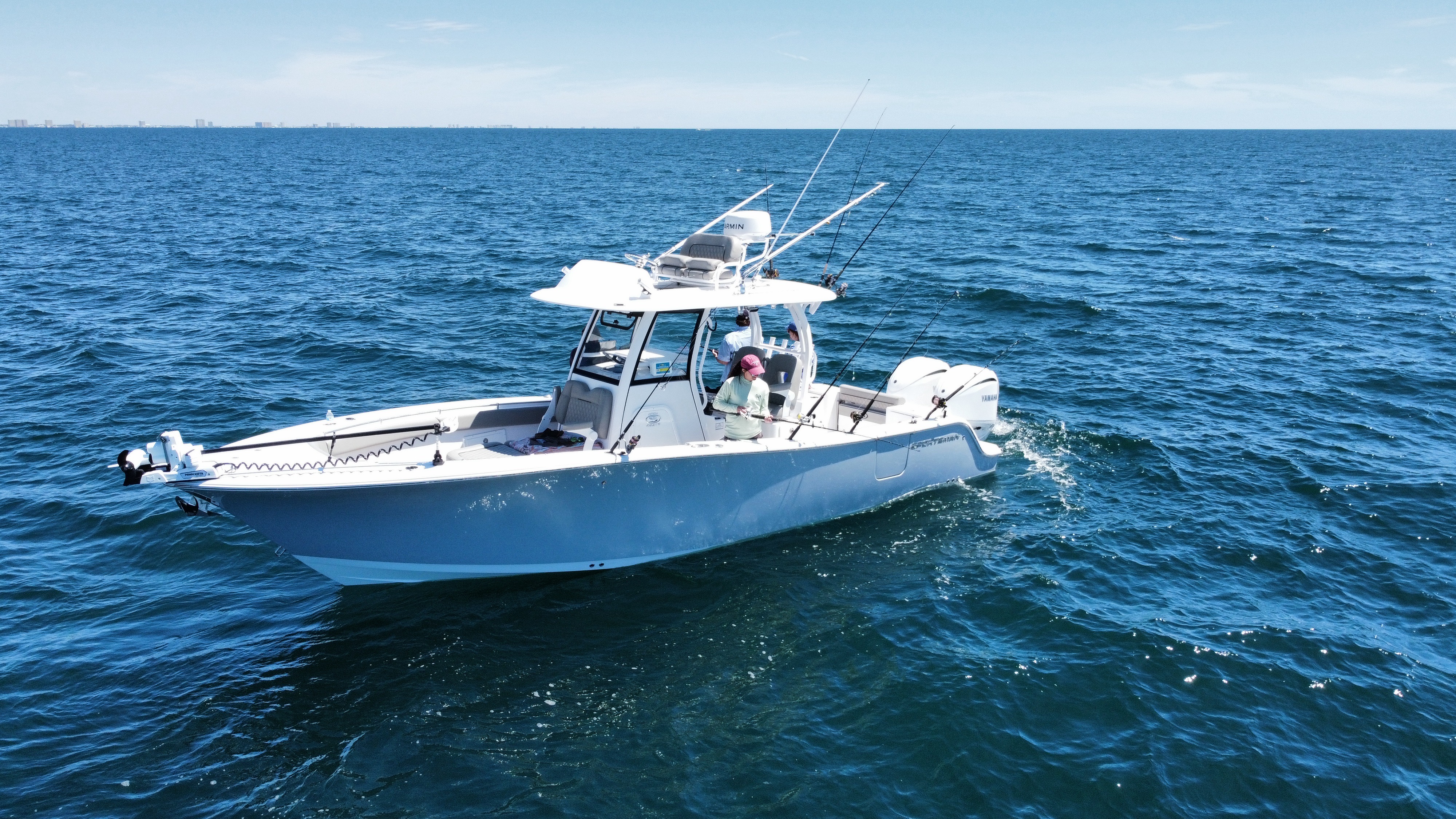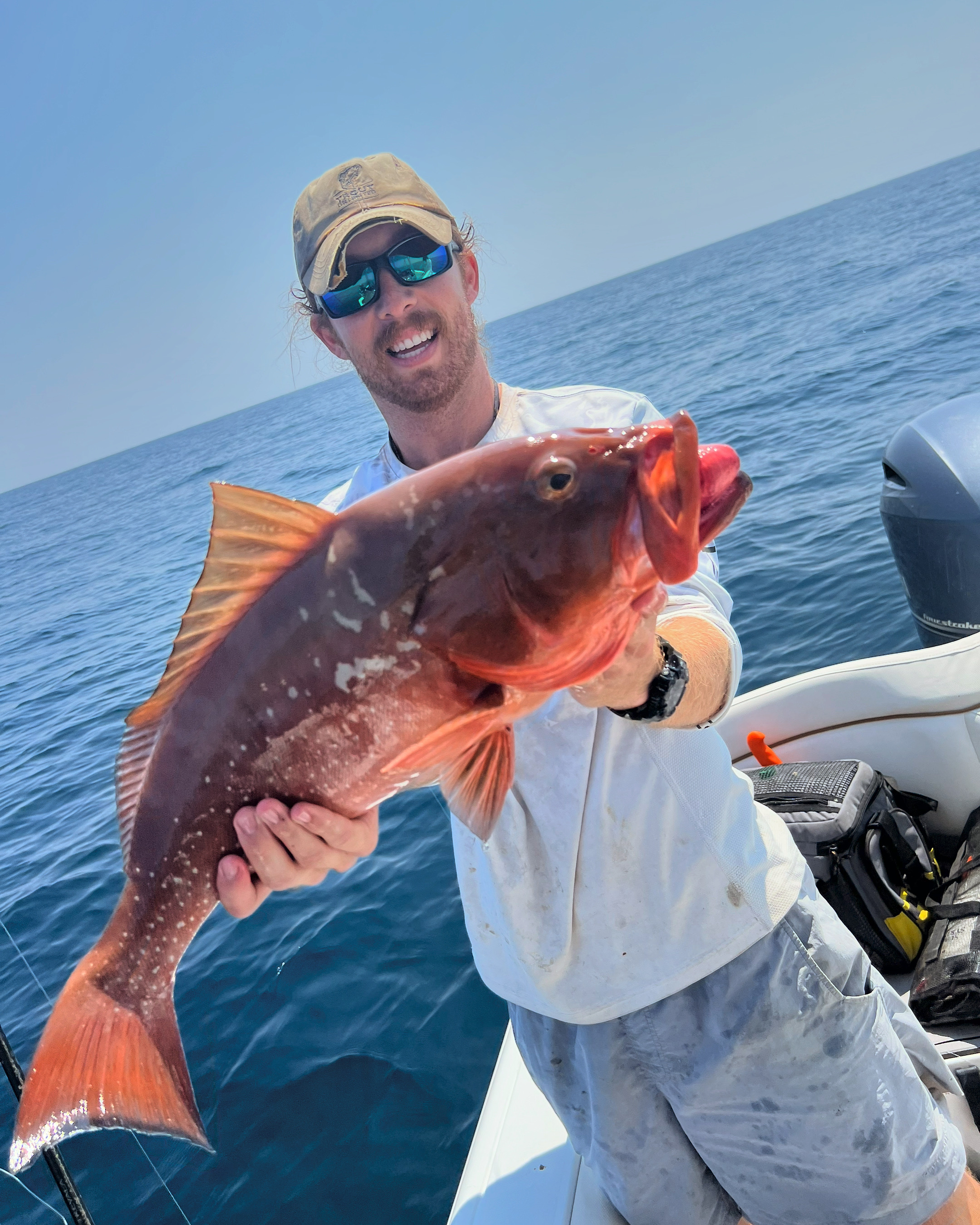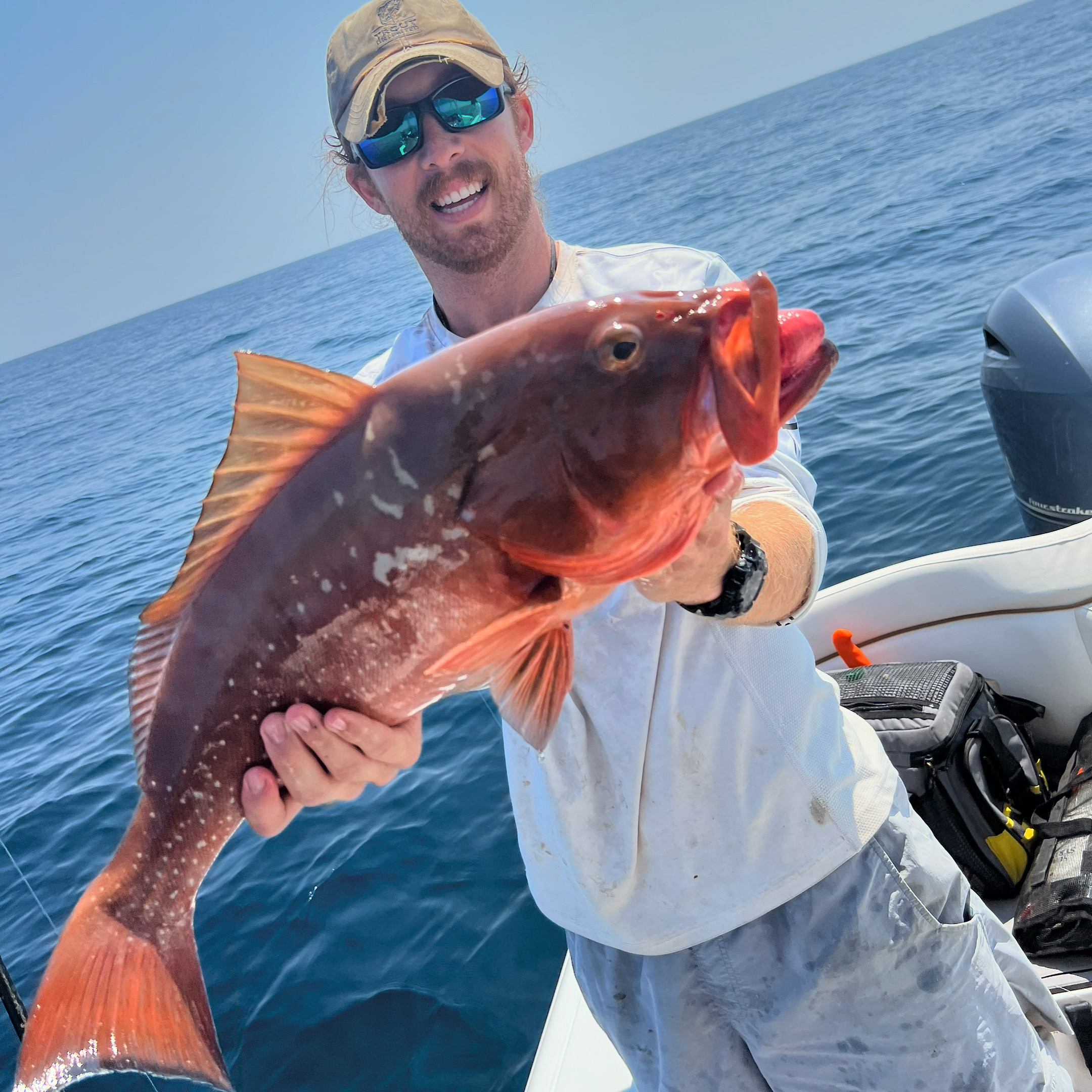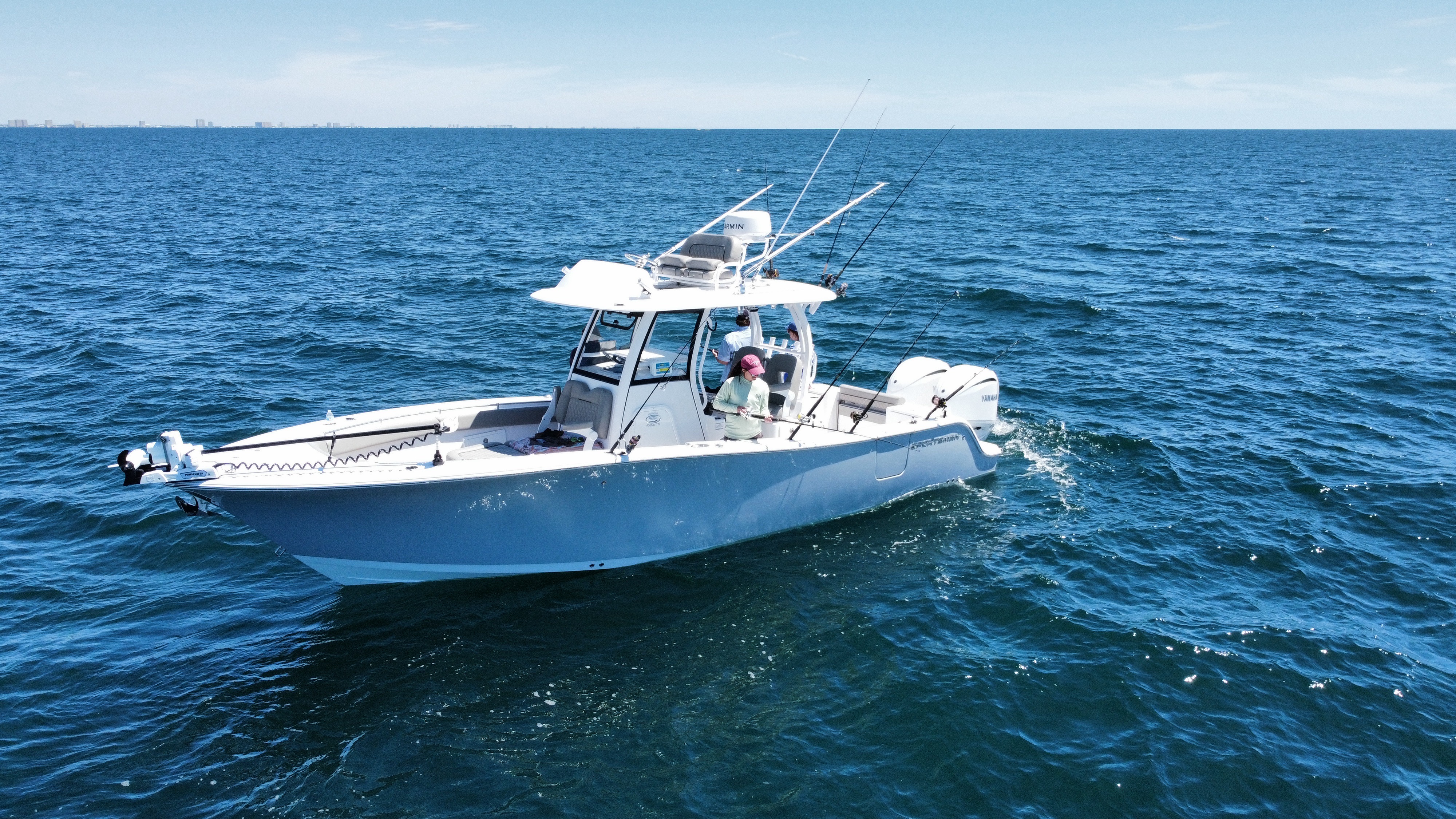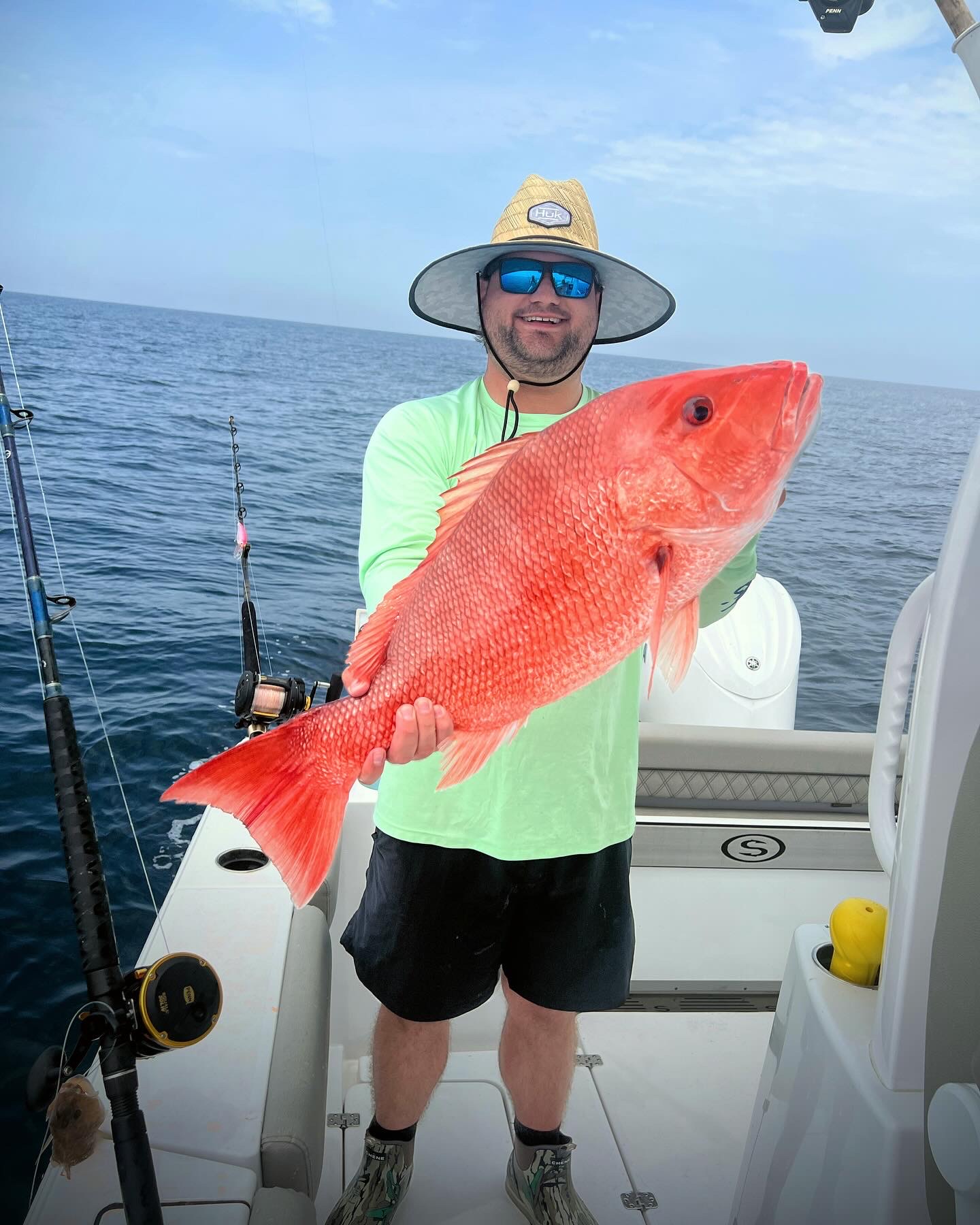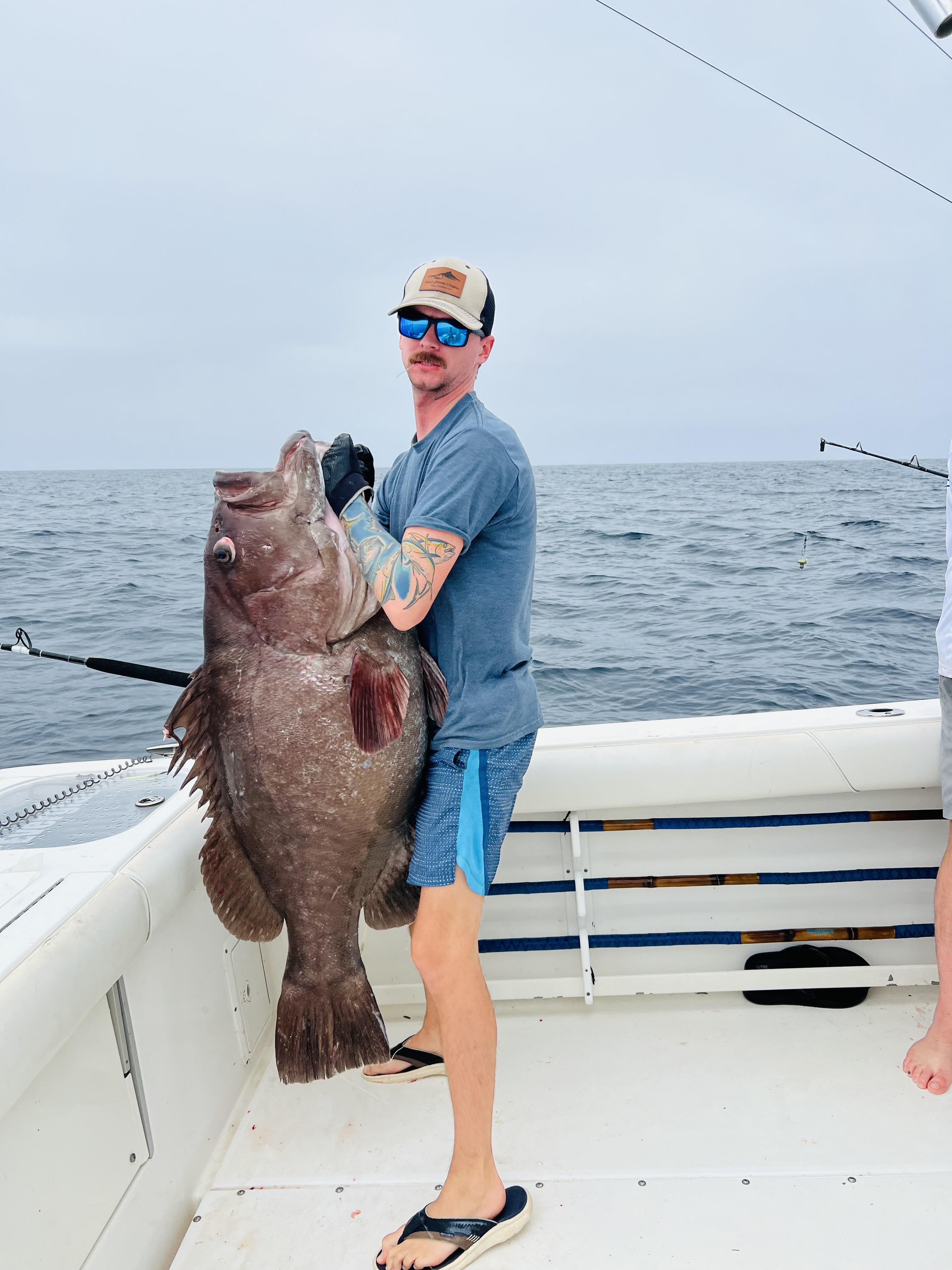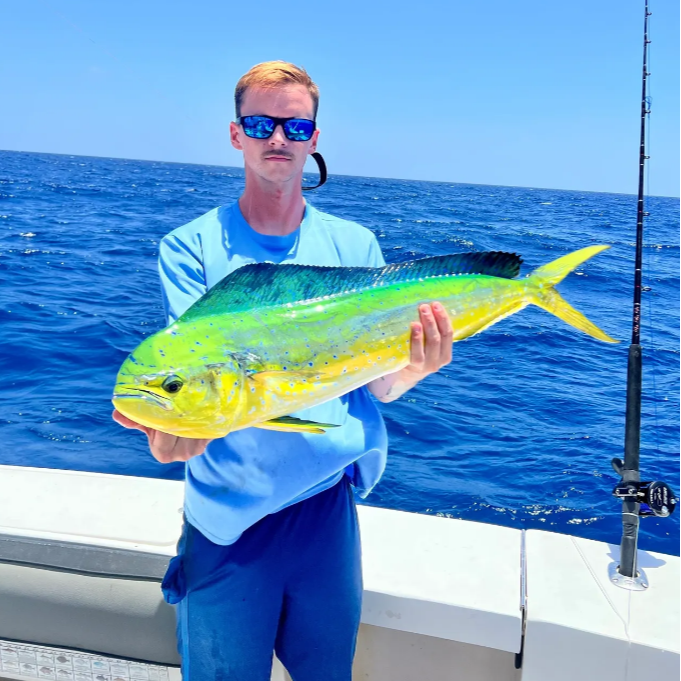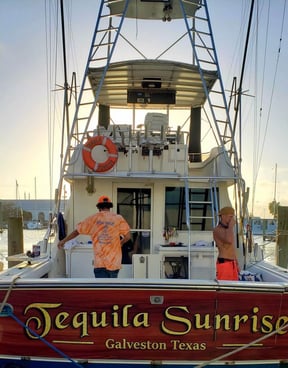VIP SPORTFISHING & OCEAN SKEET
48 Hour Deep Sea - 55' Viking
36 Hour Deep Sea - 55' Viking
48 Hr Deep Sea 55' Viking With Chef
36 HR Deep Sea 55' Viking W/ Chef
Deep Sea, Nearshore Fishing in Panama City Beach
10 Hr Offshore Deep Sea Fishing
Ocean Strike Trip
Deep Sea, Nearshore Fishing in Panama City Beach
8-Hour Offshore Fishing
Deep Sea, Nearshore Fishing in Panama City Beach
4-Hour Offshore Fishing
Deep Sea Fishing in Port Aransas
8 Hour Trip W/AC!
We started Captain Experiences to make it easy to book fishing and hunting guides around the world. With over 2,000 Damn Good Guides, our platform makes finding and booking a trip seamless. Head here to check out our trips.
Regardless of where you fish, Tuna provide anglers with a thrilling chase, adrenaline-pumping tugs, and an even better dinner.
But if you're looking to book a tuna charter or find yourself curious about this species, it's also useful to know the number of factors and differences that different types of tuna fishing bring about.
Tuna fishing varies between species, seasons, states, and techniques. At Captain Experiences, we'll guide you to an understanding of everything Tuna has to offer, and how you can use all this info to book the best tuna fishing charter for you.

Source: Marlin Magazine
Tuna Fish: Knowing the Basics for your Fishing Charter
Tuna fish travel quickly through thousands of miles of ocean, sometimes reaching up to 75mph, and can be fished and found throughout diverse international regions.
But there is more to Tuna than being simply, Tuna.
Tuna are a group of fish (or technically a tribe of fish, Thunnini, within the Scombridae family) that contain over a dozen kinds of fish within that group- tuna are actually not a singular species.
Tuna fish belong to the Thunnini tribe which is a subgroup of the Mackerel family, or Scombridae. Within the Thunnini tribe, there are 15 species, most of which fall under the genus Thunnus, and others fall in the genus Katsuwonus, which include blackfin tuna and bullet tuna.
Obligate Ram Ventilators
Some Tuna species overlap with distinct qualities. Specifically, many types of Tuna are obligate ram ventilators due to their uncommon respiratory systems.
Yellowfin tuna fish are not the only well-known sea creature who are obligate ram ventilators. The next top obligate ram ventilators are none other than sharks. Many prominent shark species swim quickly with their mouths open to ventilate their gills. The sharks that use ram ventilation have lost the proper anatomy for ram ventilation or ventilating their gills by swimming quickly with their mouths open. Some of the biggest most intimidating sharks are obligate ram ventilators and would actually die from the lack of oxygen if they ever were to stop swimming. This means sharks that are obligate ram ventilators must constantly swim to survive.
Tuna also regulate their body temperature by constantly swimming to oxygenate their blood. This causes water to pass through their gills and their muscular metabolism to generate heat.
Widespread thermoregulation indicates why different species of Tuna live in varying water temperatures throughout the world.
Five Major Commercial Tuna Species
The following five major tuna species are only a few of many Tuna species, and each varies in taste, meat texture, color, and accessibility.
Albacore Tuna:
Albacore Tuna have the lightest flesh and are the mildest in flavor. Albacore tuna tend to travel in single-species schools, without mixing with other species and situate themselves in temperate and tropical waters about 400m deep.
Albacore tuna range from 40-100 cm and 4.5-11 kg.
One concern is their high levels of mercury- the Environmental Defense Fund suggests a limited intake of White Tuna. Albacore tuna are extremely popular in American supermarkets and are often served in larger chunks than skipjack tuna, with a more delicate and drier flavor but a meaty texture.
Bigeye Tuna Fish:
Bigeye Tuna are large and stout fish and range from 40-180 cm and 1.4-130 kg, residing in tropical and subtropical areas of the Atlantic ocean (not the Mediterranean) and Indian and Pacific Oceans. They provide a firm, fattier meat with a lot of flavors.
Skipjack Tuna:
Skipjack tuna are dark blue/purple cigar-shaped fish with a pointed snout. Skipjack tuna are the smallest fish out of the commercial tuna species, their size ranges from 40-80 cm and they weigh around 2.5kg.
Their habitat is located in the tropical areas of the Atlantic, Indian, Pacific Oceans, or equatorial waters. Skipjack tuna are an abundant species of Tuna because of their short life cycles, they produce early on (at about one year old).
This means that even if a skipjack tuna is caught at a young age, the Skipjack has probably already spawned at least once in its lifetime. Skipjack tuna travel in both free schools and schools associated with floating objects, they are the principal tuna species associated with FADs which are often caught alongside juvenile yellowfin and bigeye tuna. FADs stand for a "Fish Aggregating Device." These are man-made objects or buoys that usually are comprised of floats tethered to the ocean's floor using concrete blocks. FADs attract tuna because they use them to feed on a prey species or as a reference point for schooling.
Yellowfin:
Yellowfin tuna, often served raw in sushi, are an intermediate-sized fish, often ranging from 40-170 cm and 1.2-100 kg. Yellowfin tuna cover large areas of the ocean all over the globe and all of their stocks mingle with one another. Yellowfin tuna swim in associated and free schools, the free schools often include large yellowfins and are mono-specific. As a large and fast fish, grown yellowfin tuna are often found swimming with dolphins.
Also cool to note about the yellowfin tuna is how they got their name. The name "yellowfin tuna" name comes from their yellow-sickle-shaped tail, dorsal fins, anal fins, and finlets. This makes for a torpedo-shaped fish that is an especially prized catch out of Venice, Louisiana.
Southern Bluefin:
Southern Bluefin tunas are a large species of fish, the adults often reaching 180cm, with a weight of around 180kg. Southern Bluefins move across vast distances and often swim in schools based on their size, specifically the juvenile southern bluefin in spawning season.
Southern bluefin can tolerate cold water temperatures due to their thermoregulation capacity. Bluefins are often regarded as the kings of the Tuna family- they have a very popular flavor because of their high-fat content with a dark to red color of their meat.
Comparing and Understanding Tuna Fishing Hot Spots
Yellowfin and Blackfin Tuna fishing in Venice, Louisiana:
Booking a fishing charter out of Venice, Louisiana will bring you a fish with a dark blue, metallic back, silvery sides, and a white belly- also known as a blackfin tuna.
Blackfin tuna are an abundant and fast-growing species. On a Venice, Louisiana fishing charter, you may encounter a group of Blackfin tuna traveling in a school, like Mahi-mahi. Blackfin tuna will bring you a fun and exciting day on the water because they travel at high speeds and in large schools, meaning they are challenging, exciting, yet often ready to bite because they are attracted to anything from live bait to artificial lures.
Searching for a yellowfin catch, specifically in Venice, Louisiana, will also never fail to disappoint. Deep-sea anglers catch more yellowfin tuna off the coast of Venice, Louisiana than anywhere else in the world, and booking a fishing charter with Captain Experiences can help you become one of those anglers.
Venice is the tuna fishing capital of the Gulf of Mexico and most fish range from 20-60 pounds (although anglers have reeled in yellowfin up to 240 pounds). The Gulf though is a large body of water, so booking a tuna fishing charter through Captain is vital to most effectively navigate your way to catching a monster yellowfin.
What distinguishes the Gulf as a tuna fishing hotspot are the copious numbers of oil rigs. While the rig is not as important as the water quality, water depth (with an optimal 1500 feet), and the baitfish used, yellowfin often situate near the rigs' up-current sides.
To avoid taking the trip out to the floater rigs to catch a yellowfin, offshore fishing in Venice may be best in the fall and winter months because the cleaner water is pushed closer to shore.
If you're interested in a Venice, LA trip or gunning for some yellowfin, you can look at more of our Venice, Louisiana trips here.
Bluefin Tuna Fishing in Chatham, Massachusetts
By booking a tuna fishing charter off of Chatham, Massachusetts, you will not only find yourself in a bluefin tuna hotspot but you will be fishing on some of the most historic waters for targeting the largest bluefins.
Since the 1940s, Massachusetts has been home to one of the largest commercial fishing fleets and continues to innovate and grow its fishing scene using new technologies.
Bluefin tuna often arrive in the Chatham area in early June, after migrating from their winter breeding grounds. Chatham attracts large numbers of bluefin tuna due to feeding. Chatham, Massachusetts is home to sandeels, mackerel, and herring, all favorites of the Bluefin Tuna which they feed on as they migrate north to Nova Scotia and Canada. Juvenile bluefins enter through eddies that have broken off from the Gulf stream and through the nearshore waters.
As bluefin tuna migrate back to the Gulf of Mexico, the fall season will bring multi-sized fish classes that feed to fatten up as they begin their journey to spawn. This process occurs in September, although bluefin tuna fishing remains good through November, and sometimes into December.
For more on tuna fishing charters in Chatham, Massachusetts, check out our website! For more info on general fishing in Massachusetts, read this blog where the co-founder of Captain Experiences, Jonathan Newar, interviews Captain Drew from Chatham, Massachusetts.
Bluefin and Yellowfin Tuna Fishing in San Diego
Bluefin tuna fishing is the pinnacle of Southern California sportfishing. Bluefin tuna fishing in San Diego ranges moderately throughout the year, however it peaks from July to September, although there is no closed season.
Yellowfin tuna make up even larger numbers of San Diego sportfish than bluefin tuna. The yellowfin, or “ahi tuna,” can be targeted with topwater techniques because they feed close to the surface. This distinguishes the yellowfin tuna as a highly abundant pelagic species, although Bluefin can also be caught on topwater from time to time.
Bluefin Tuna Fish in Texas
If you are looking to book a Texas fishing charter, chances are, you'll snag a tuna fish along the way. Many Texas fishing charters eagerly await the long run off the Texas coast for tuna. One of the biggest fishing targets for a Texas fishing charter are yellowfin tuna or blackfin tuna, which have no limits on how many an angler can catch.
Not quite hooked on the idea of booking a tuna fishing charter in Texas? Recently, about 150 miles off the coast of Port Aransas, Texas fisherman, Troy Lancaster, reeled in a record-breaking 876-pound bluefin tuna fish. On April 13, Lancaster broke a 40 year Texas record for bluefin tuna. While Lancaster was using skipjack tuna as bait, to catch a marlin, his journey ended with a nine-hour process to reel in this 121-pound female bluefin tuna. Lancaster and his team knew there was a possibility of hooking a bluefin tuna on the larger side because they tend to migrate to the Gulf during April and early May.
If you are curious about what it looks like catching a tuna in Texas, you can look at this video from a Galveston, Texas fishing charter.
Primetime Fishing Seasons for Tuna Based on States
As one of the most sought-after fish, knowing the best time to set out on the Tuna hunt is vital, but the prime seasons to book a charter may vary depending on your state:
Florida Tuna Fishing
Booking a fishing trip in Florida is a great idea, considering Florida is often regarded as the fishing capital of the world. The good news is, Florida’s tuna fishing season is relatively unlimited. However, a Florida tuna fishing trip from May to September would take full advantage of the Sunshine State.
Massachusetts Tuna Fishing
While states like Louisiana and Florida remain warm year-round, the tuna fishing season in northeastern states like Massachusetts and Maine ranges best from early June until November. In this region, prime-time tuna fishing season arrives in August and ends around September, although you really cannot go wrong in any of these months.
California Tuna Fishing
The best tuna fishing season in California occurs from July to September. The warm summer weather serves as a great climate for booking a charter and setting out to fish.
Wherever you are, or whichever state you choose to charter in, the summer season is the perfect time to book a trip through Captain Experiences and hook yourself to a Tuna!
Louisiana Tuna Fishing
Like Florida, with tropical weather and large amounts of tuna, Louisiana's fishing season never truly comes to an end. You will likely come across tuna species such as yellowfin, blackfin, and bluefin during a Louisiana tuna fishing charter.
Tips and Techniques to Tackle Tuna:
The Top Water Tactic:
When tuna begin to aggressively feed on the water’s surface, a great technique to liven up any fishing trip is to catch em on topwater. By casting topwater lures to these hungry tunas brings a huge thrill to sport-fishing.
For this tactic, you will need long-distance casting and rapid retrieval of large lures. On top of this, the heavy-duty spinning tackle will help with the immense pressures of the fish, considering that many tuna caught at the surface can weigh over 100 lbs. It will be hard to forget seeing a tuna bursting from the water’s surface and several feet into the air.
Our co-founder, Jonathan, recently took a tuna trip with Capt. Lee out of Galveston, TX and caught a nice Yellowfin Tuna on topwater here.
Chunking:
When fishing close to oil rigs, pumping stations, and drillships, anglers will traditionally use a “chum line” of chunk baits to reel in tuna. With this technique, also known as “handlining,” anglers must pull 3 to 4-foot portions of the line off of the reel.
This causes the rigged bait to float alongside the free-swimming chunk baits in the current. While chunking does require practice, it serves as a useful tactic for when tunas are feeding in the top level of the water column.
The Trolling Technique:
The trolling method works by dragging artificial or rigged dead baits behind the boat. Unlike the chunking technique, trolling is not used near oil rigs or pumping stations. However, it regularly proves effective for attracting large tuna.
Live Baiting:
When it comes to larger tunas, live baiting is a great technique to use because a lively and jumpy bait will tempt the tuna. Great examples of live bait include mullets, pogies, threadfin herring, hardtails, and small tuna.
Vertical Jigging:
Many tuna reside hundreds of feet beneath the surface, clinging to the structures far below. If you're seeking a way to reach these fish and sink fast, vertical jigging is the technique to use.
Vertical jigging requires the angler to quickly retrieve their jig and use the rod to create a “fluttering” motion. These movements mimic a baitfish fleeing to the surface.
While vertical jigging is an effective technique, it is important to note that jigging is the most physically demanding out of all fishing techniques and requires heavy lead jigs.
Kite Fishing:
The kite fishing technique works quite similarly to how it sounds: by using a kite to fly bait away from your boat.
The use of the kite fishing technique establishes two successes for the fisher. The first accomplishment is that if the boat is creating a lot of noise, possibly scaring away tuna, and kite fishing moves the bait away from the boat.
The second accomplishment that kite fishing achieves is that it removes the fishing line from the water so that the tuna cannot see the line. Occasionally, the kite fishing line will dip the bait in the water, but it's very difficult for tuna to deny themselves a bite of frozen flying fish. This technique is especially popular out on the west coast in places like San Diego.
Knowing Your Depth Sounder:
Keeping an eye on your depth sounder can help lure in more tuna who become less afraid to bite at deeper depths. To do this, mark the school beneath your boat, check in with your lures, and feel the fish’s weight on the line before setting the hook!
Stay Chummy with Your Chum:
One thing tuna can't deny is chum. By simply working the chum, and even perhaps turning off your engine and drifting, tuna will get very close to your boat for some intense action.
Faking out Your Fish:
Tuna are smart. Often they may dive or swim as you approach them. However, if you troll the fish slowly at about three knots, and run a line on a high angle outrigger (allowing the bait to float at about 300 yds behind the boat) you can fake the tuna out and they will disassociate the bait from your boat.
Look out for the Lighting:
Depending on the day you book a tuna fishing charter, the light and weather may vary. On a darker or foggier day, tuna tend to feed closer to the surface. You can also adapt to the lighting by changing the lure color to better match the water and light conditions.
Once You’ve Got a Tuna- How do you keep it?
Tuna are strong- that's what makes them such a fun catch. And they're hard fighters, yellowfin, and bluefin specifically.
Once you've hooked a tuna, it's vital to maintain constant tension. You may even release tension, assuming your tuna has broken off.
However, tuna are smart fish and often make hard runs that challenge great drag systems causing a line to go slack, but the tuna has not necessarily escaped. When the tuna is hooked, it will make deep circles beneath the boat. To keep the tuna, slowly lift and then wind down.
Tuna Fun Fact: The World Record Tuna
After 40 years of fishing and tuna charters, Ken Fraser’s bluefin tuna has kept the champion title of the largest tuna catch, weighing a whopping 1,496 pounds.
Fraser’s catch is the largest tuna recorded by the International Game Fish Association and is also regarded as one of the world’s most iconic fishing records.
After a long 10 hours on the boat "Lady and Misty," Frasier caught the tuna after it ate a trolled mackerel. Frasier accomplished this fishing record on October 29, with Captain Eric Samson and reeled in this giant tuna fish off Nova Scotia. On top of the bluefin’s record-breaking weight, it only took Frasier 45 minutes to reel in the monstrous fish close enough for the gaff.
Looking to beat this record? Book an exciting and fun tuna fishing charter with Captain Experiences and try it out with our experts!
Samantha Baron
Updated on April 28, 2023

October 26, 2020

May 13, 2024

April 26, 2022

January 7, 2022

August 21, 2023
Related Articles
January 27, 2021
February 9, 2021
February 28, 2022
Featured Locations
- Fishing Charters Near Me
- Austin Fishing Guides
- Biloxi Fishing Charters
- Bradenton Fishing Charters
- Cabo San Lucas Fishing Charters
- Cancun Fishing Charters
- Cape Coral Fishing Charters
- Charleston Fishing Charters
- Clearwater Fishing Charters
- Corpus Christi Fishing Charters
- Crystal River Fishing Charters
- Dauphin Island Fishing Charters
- Daytona Beach Fishing Charters
- Destin Fishing Charters
- Fort Lauderdale Fishing Charters
- Fort Myers Fishing Charters
- Fort Walton Beach Fishing Charters
- Galveston Fishing Charters
- Gulf Shores Fishing Charters
- Hatteras Fishing Charters
- Hilton Head Fishing Charters
- Islamorada Fishing Charters
- Jacksonville Fishing Charters
- Jupiter Fishing Charters
- Key Largo Fishing Charters
- Key West Fishing Charters
- Kona Fishing Charters
- Lakeside Marblehead Fishing Charters
- Marathon Fishing Charters
- Marco Island Fishing Charters
- Miami Fishing Charters
- Montauk Fishing Charters
- Morehead City Fishing Charters
- Naples Fishing Charters
- New Orleans Fishing Charters
- New Smyrna Beach Fishing Charters
- Ocean City Fishing Charters
- Orange Beach Fishing Charters
- Panama City Beach Fishing Charters
- Pensacola Fishing Charters
- Pompano Beach Fishing Charters
- Port Aransas Fishing Charters
- Port Orange Fishing Charters
- Rockport Fishing Charters
- San Diego Fishing Charters
- San Juan Fishing Charters
- Sarasota Fishing Charters
- South Padre Island Fishing Charters
- St. Augustine Fishing Charters
- St. Petersburg Fishing Charters
- Tampa Fishing Charters
- Tarpon Springs Fishing Charters
- Venice Fishing Charters
- Virginia Beach Fishing Charters
- West Palm Beach Fishing Charters
- Wilmington Fishing Charters
- Wrightsville Beach Fishing Charters
